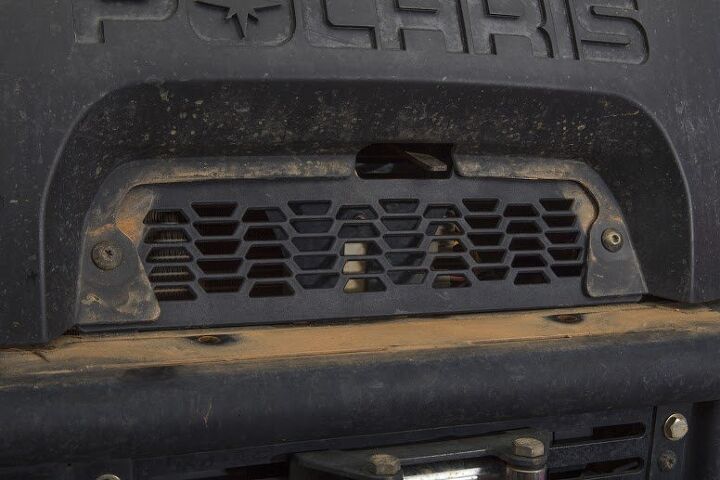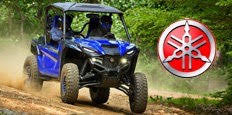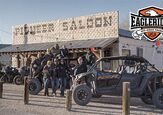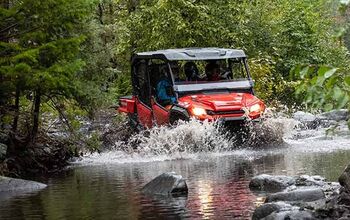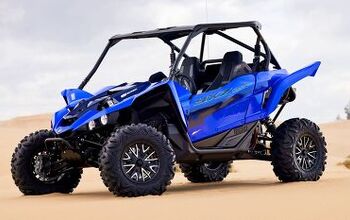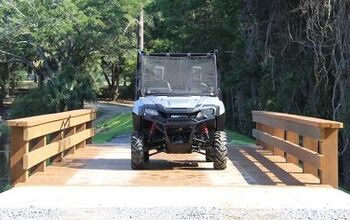How To Install LED Headlights
If you own an ATV or UTV that is a few years old, a good place to look for inspiration on how to improve it is the current model year of your machine.
When our 2013 Polaris Ranger Crew was delivered, it came with halogen lighting out front. For 2016, that same machine comes with a full LED headlight package. Fortunately, these headlights can be purchased from a local Polaris dealer can be installed in one short evening.
Our stock halogen headlights were not cutting it. Time for an upgrade!
Our hunting rig has been used for many pre-sunrise excursions to get eager bear hunters into the North Georgia Mountains. One thing you can never have enough of is light on a people mover like this, so we decided to head over to Gainesville Motor Sports in Gainesville, Ga. to pick up our special order replacement LED headlights. Be very aware that these will set you back some coin, to the tune of about $340 straight from Polaris, but they produce brilliant white light and lots of it. These lights also cast their glow much farther up the trail.
The first thing we wanted to do was to get all of the tools needed for the install in our work area so we didn’t have go hunting for anything we might need. A #25 Torx bit on a drill was used for the majority of the panel removal, as well as a Phillips head screwdriver.
A basic #25 Torx bit and a Phillips head screwdriver are main tools you’ll need for this job.
Our Ranger Crew has a brush guard on the front that also needed to be removed, but we opted to leave this process out of this story as the majority of you won’t have that accessory installed. If you have the factory winch bumper you will be able to follow along very well.
1. Remove the small plastic vented filler piece in the center of the grill by simply taking two #25 Torx screws out.
2. Remove the four #25 Torx screws from the outer edge of the front fascia. There are two on each front corner.
3. Remove the #25 Torx screw on the top of the front fascia. This holds the front fender plastic and front fascia together.
4. Reach inside the upper front fascia and unplug your headlights from the factory harness. It is tight inside there and some of the plastic can have sharp edges so be careful and patient. Lift the complete front fascia with headlights still attached off of your machine and lay face down on a worktable or non-scratch surface.
5. Remove the Phillips head screws and rubber retaining o-rings from the headlights and set them aside.
This is when we realized the front fascia needed a bath so after a good washing we were ready to start the install of our new LED lights. The LED headlight kit came with not only the lights, but the hardware and springs needed to mount them in the plastic fascia. So lets get back at it.
6. The Polaris Ranger fascia already has the pins molded into the part to accept the upgrade headlights. After installing the buffer springs we simply screwed the new LED lights to the plastic front end.
7. The final step before putting the front end back together is to install the adaptor plug to go from the factory wiring harness to the new lights.
8. After the front fascia is reinstalled it was time to see if the lights were at least pointing in a usable direction. We are bear hunters here in North Georgia and not Coon hunters, so we need the light on the ground not up in the trees!
Our installation of these headlights took us about 1.5 hours and mostly because the phone was ringing off the hook the entire time. A proficient mechanic could get this finished in an hour or so if left uninterrupted. This was possibly the best upgrade just because it was so easy to install and we have gotten many miles of great use from this machine since.
Our new LED headlights do a much better job of lighting up the trail.
Visit Polaris.com for this and many other cool products to make your Ranger or Ranger crew an even better machine.
Polaris LED Headlight Conversion Kit: Part
Whether he is in Mexico covering the Baja 1000, building ATVs for local racers, or out enjoying the trails, Rick’s passion shows in his stories. Learning to wrench his own machines from his grandfather, Rick also has an undying appreciation for the mechanics of off-road vehicles. Do not let the dirt and mud fool you, though, as Rick also has a deep love for street cars.
More by Rick Sosebee






